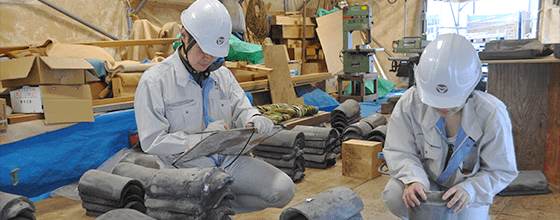The work of the conservation architect
The designing and management of conservation and repair projects for heritage buildings requires very specialized professionals. Conservation architects must have a deep knowledge of traditional building techniques as well as modern conservation technology. In addition, as surveys and investigations are conducted continuously before and during the whole repair process, conservation architects must have the required skills to conduct them and interpret their results. In Japan, only specialized conservation architects authorized by the government can work on the repair of buildings designated as Important Cultural Properties or National Treasures.
Read More
The designing and management of conservation and repair projects for heritage buildings requires very specialized professionals. Conservation architects must have a deep knowledge of traditional building techniques as well as modern conservation technology. In addition, as surveys and investigations are conducted continuously before and during the whole repair process, conservation architects must have the required skills to conduct them and interpret their results. In Japan, only specialized conservation architects authorized by the government can work on the repair of buildings designated as Important Cultural Properties or National Treasures.
Read More



